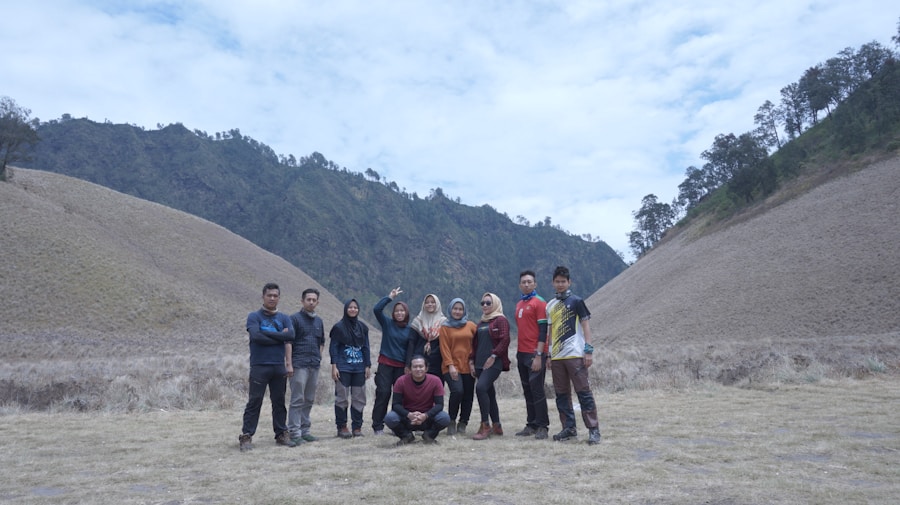The relationship between natural and social sciences is a complex and dynamic interplay that has evolved over centuries. Natural sciences, which encompass disciplines such as biology, chemistry, physics, and earth sciences, focus on understanding the physical world through empirical observation and experimentation. In contrast, social sciences, including sociology, psychology, economics, and political science, seek to comprehend human behavior and societal structures.
The convergence of these two realms is not merely an academic curiosity; it is essential for addressing the multifaceted challenges that modern society faces. Issues such as climate change, public health crises, and technological advancements require insights from both natural and social sciences to develop comprehensive solutions. This interdisciplinary approach is increasingly recognized as vital for fostering innovation and enhancing our understanding of complex phenomena.
For instance, the COVID-19 pandemic highlighted the necessity of integrating epidemiological data with social behavior analysis to effectively manage public health responses. As we delve deeper into this interplay, it becomes evident that the boundaries between natural and social sciences are not rigid but rather fluid, allowing for a richer exploration of knowledge that can lead to more effective problem-solving strategies.
Key Takeaways
- The interplay of natural and social sciences is essential for understanding complex societal issues.
- Natural sciences play a crucial role in shaping social sciences by providing data, theories, and methodologies.
- Social sciences influence natural sciences by shaping research questions, ethical considerations, and policy implications.
- Case studies of interdisciplinary research demonstrate the potential for innovative solutions to real-world problems.
- Integrating natural and social sciences presents challenges but also offers opportunities for advancing knowledge and addressing global challenges.
The Role of Natural Sciences in Shaping Social Sciences
Natural sciences have significantly influenced the development of social sciences by providing foundational methodologies and frameworks for understanding human behavior within the context of the physical world. For example, the principles of biology have informed fields such as psychology and sociology by offering insights into human development, behavior, and social interactions. The biological perspective on human behavior emphasizes the role of genetics, neurobiology, and evolutionary processes in shaping individual actions and societal norms.
This biological underpinning has led to a more nuanced understanding of issues such as mental health, addiction, and social dynamics. Moreover, natural sciences contribute to social sciences through quantitative research methods that enhance the rigor of social inquiry. Statistical techniques derived from natural sciences enable social scientists to analyze data systematically, leading to more robust conclusions about societal trends and behaviors.
For instance, econometrics—a field that applies statistical methods to economic data—has revolutionized economics by allowing researchers to test hypotheses and model complex economic systems with greater precision. This integration of natural science methodologies into social science research not only strengthens the validity of findings but also fosters a culture of evidence-based policy-making.
The Influence of Social Sciences on Natural Sciences

Conversely, social sciences have also played a pivotal role in shaping the direction and focus of natural sciences. The recognition that scientific inquiry does not occur in a vacuum has led to an increased awareness of the social implications of scientific research. For instance, environmental science has been profoundly influenced by sociological insights regarding human behavior and community engagement.
Understanding how communities perceive environmental issues and their willingness to adopt sustainable practices is crucial for developing effective conservation strategies. Social scientists contribute valuable perspectives on how cultural values, economic incentives, and social norms can either facilitate or hinder environmental initiatives. Additionally, the ethical considerations surrounding scientific research have been significantly informed by social science perspectives.
The history of scientific experimentation is replete with instances where ethical boundaries were crossed, often leading to harm or exploitation. Social scientists advocate for ethical standards that prioritize human rights and dignity in research practices. This influence is particularly evident in fields such as medical research, where bioethics has emerged as a critical area of study that examines the moral implications of scientific advancements.
By integrating social science insights into natural science practices, researchers can ensure that their work is not only scientifically sound but also socially responsible.
Case Studies of Interdisciplinary Research
| Case Study | Research Topic | Disciplines Involved | Key Findings |
|---|---|---|---|
| Case Study 1 | Climate Change Impact | Environmental Science, Sociology, Economics | Identified social and economic factors influencing climate change adaptation |
| Case Study 2 | Healthcare Technology | Biomedical Engineering, Computer Science, Medicine | Developed a new medical device for remote patient monitoring |
| Case Study 3 | Urban Planning and Design | Architecture, Civil Engineering, Sociology | Proposed sustainable urban development strategies |
Numerous case studies exemplify the successful integration of natural and social sciences in addressing complex societal challenges. One notable example is the field of climate change research, where scientists from various disciplines collaborate to understand both the physical processes driving climate change and the social factors influencing human responses to it. The Intergovernmental Panel on Climate Change (IPCC) brings together climatologists, economists, sociologists, and policy experts to produce comprehensive assessments that inform global climate policy.
This interdisciplinary collaboration has led to a more holistic understanding of climate change impacts and has facilitated the development of strategies that consider both environmental sustainability and socio-economic equity. Another compelling case study is found in public health initiatives aimed at combating infectious diseases. The response to outbreaks such as Ebola or Zika virus has demonstrated the necessity of integrating epidemiological data with sociocultural insights.
Researchers have found that understanding local customs, beliefs, and communication networks is crucial for effectively disseminating health information and ensuring community compliance with public health measures. For instance, during the Ebola outbreak in West Africa, public health officials collaborated with local sociologists to develop culturally sensitive messaging that resonated with communities. This approach not only improved health outcomes but also fostered trust between health authorities and local populations.
Challenges and Opportunities in Integrating Natural and Social Sciences
Despite the clear benefits of interdisciplinary collaboration between natural and social sciences, several challenges persist that can hinder effective integration. One significant barrier is the difference in methodologies and epistemologies between the two fields. Natural sciences often prioritize quantitative data and experimental methods, while social sciences may rely more on qualitative approaches that emphasize context and meaning.
This divergence can lead to misunderstandings or misinterpretations when researchers from different disciplines attempt to collaborate. Additionally, institutional structures within academia can pose challenges to interdisciplinary research. Many universities maintain rigid departmental boundaries that discourage collaboration across disciplines.
Researchers may face difficulties in securing funding for interdisciplinary projects or may encounter resistance from peers who prioritize traditional disciplinary approaches. However, these challenges also present opportunities for innovation. By fostering environments that encourage interdisciplinary dialogue and collaboration, academic institutions can cultivate a culture of inquiry that transcends traditional boundaries.
Ethical Considerations in Interdisciplinary Research

Ethical considerations are paramount in interdisciplinary research involving both natural and social sciences.
For instance, when conducting research that involves human subjects, it is essential to consider not only the scientific validity of the study but also the potential impact on participants’ lives and communities.
Researchers must navigate complex ethical dilemmas related to informed consent, privacy, and potential harm. Moreover, interdisciplinary research often involves collaboration with marginalized communities or vulnerable populations. In such cases, researchers must be particularly attuned to power dynamics and ensure that their work does not perpetuate existing inequalities or exploit vulnerable groups.
Engaging with community stakeholders throughout the research process can help mitigate these risks and foster a sense of ownership among participants. Ethical frameworks that prioritize inclusivity and respect for diverse perspectives are essential for guiding interdisciplinary research practices.
Future Directions for Collaboration between Natural and Social Sciences
Looking ahead, there are numerous avenues for enhancing collaboration between natural and social sciences that hold promise for addressing pressing global challenges. One potential direction is the increased use of technology to facilitate interdisciplinary research. Advances in data analytics, machine learning, and artificial intelligence offer new opportunities for integrating large datasets from both natural and social sciences.
For example, researchers can analyze environmental data alongside demographic information to better understand how climate change disproportionately affects different communities. Furthermore, educational initiatives aimed at fostering interdisciplinary thinking among students can lay the groundwork for future collaboration. By incorporating interdisciplinary curricula that emphasize critical thinking and problem-solving across disciplines, educational institutions can prepare the next generation of researchers to approach complex issues holistically.
Encouraging students to engage in collaborative projects that draw on both natural and social science perspectives can cultivate a mindset that values interdisciplinary exploration.
Advancing Knowledge through Interdisciplinary Exploration
The interplay between natural and social sciences represents a rich tapestry of knowledge that has the potential to transform our understanding of complex issues facing society today. By recognizing the value of interdisciplinary collaboration, researchers can leverage diverse perspectives to develop innovative solutions that address multifaceted challenges. As we continue to navigate an increasingly interconnected world, fostering dialogue between these two realms will be essential for advancing knowledge and promoting sustainable progress across various domains.
If you are interested in learning more about how plants can thrive in indoor and outdoor spaces, you may want to check out this article on the best succulents for indoor and outdoor spaces. Succulents are known for their ability to adapt to various environments, making them a popular choice for both indoor and outdoor gardens. Understanding how different plant species interact with their surroundings can provide valuable insights into the natural sciences.
FAQs
What is natural science?
Natural science is a branch of science that seeks to understand the natural world through observation, experimentation, and evidence-based reasoning. It includes disciplines such as biology, chemistry, physics, and earth sciences.
What is social science?
Social science is a branch of science that studies human society and social relationships. It includes disciplines such as sociology, psychology, anthropology, economics, and political science.
What are the similarities between natural and social science?
Both natural and social sciences use the scientific method to study and understand phenomena. They both rely on empirical evidence, observation, and experimentation to develop theories and explanations.
What are the differences between natural and social science?
The main difference between natural and social science is the subject of study. Natural science focuses on the natural world and physical phenomena, while social science focuses on human behavior, society, and social interactions.
How do natural and social science complement each other?
Natural and social sciences often intersect in areas such as environmental science, where the impact of human behavior on the natural world is studied. Additionally, social science research methods are often used to study human behavior in natural science fields such as conservation and environmental management.
What are some career options in natural and social science?
Career options in natural science include biologist, chemist, physicist, geologist, and environmental scientist. In social science, career options include sociologist, psychologist, anthropologist, economist, and political scientist.






















+ There are no comments
Add yours